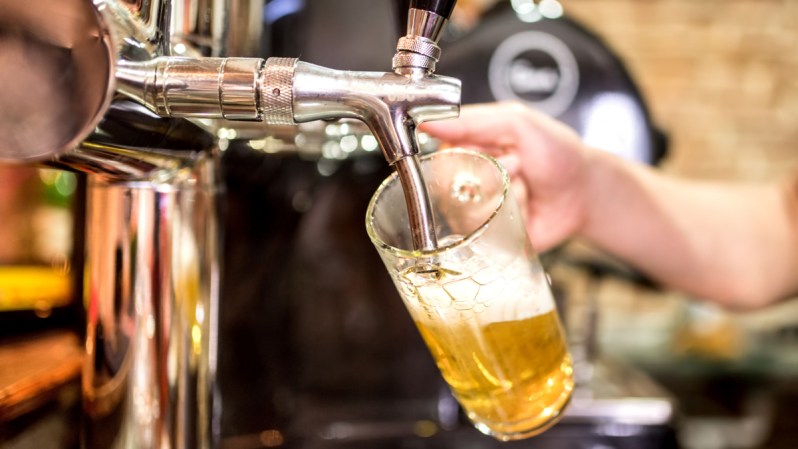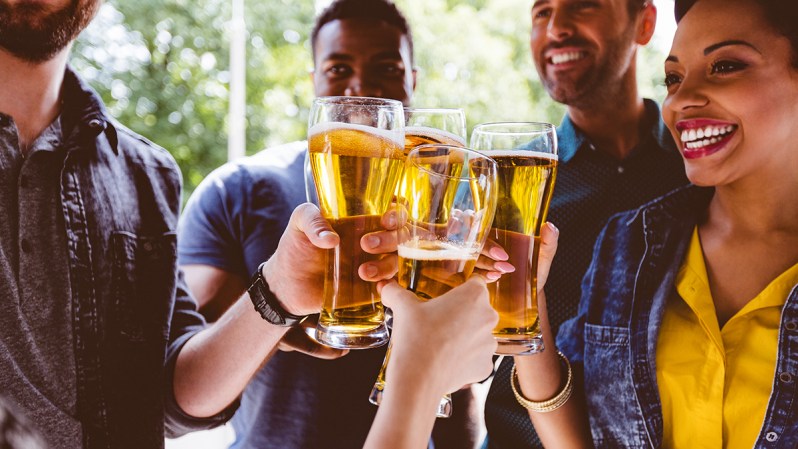At the 2018 Craft Brewers Conference in Nashville this month, one thing was made abundantly clear: the Brewers Association wants consumers to care deeply about the independence of a brewery’s ownership.

With its days of seminars and a massive trade show, the annual convention is invaluable to the thousands of brewers who now make a living in this country. In tightening marketplace, this message shined through.
Brewers Associate released its “Independent Craft” seal last year, which really hammered in the importance of strength in numbers against the macro brewers — namely AB InBev, the makers of Budweiser, etc. — and their perceived tactics of stifling the craft industry. The mission is decent, but it does seem like an awful lot of effort to be poured into an issue most consumers have no qualms over, especially if the effort could possibly be put to better use in more important issues.
Still, there were plenty of other takeaways from the business conference. Here’s a few we felt were most prominent:
Big Beer Makes Good Beer

For all the anti-big beer chatter, AB InBev brands performed extremely well at the week’s World Beer Cup, a bi-annual event held in conjunction with the CBC. Where money goes can matter, but good beer is good beer.
AB-acquired breweries Devils Backbone (two), 10 Barrel (two), Four Peaks, and Golden Road Brewing all won medals. InBev Belgium wearned accolades for Julius, a Belgian-style pale dtrong ale, and Hoegaarden White, a Hoegaarden Grand Cru. An English brewery owned by the conglomerate, Camden Town Brewery, won two awards for Camden Gentlemans Wit and Camden Pils Lager.
Miller and Pabst took home gold, silver, and bronze in the American-style lager category with Old Style Lager, Pabst Blue Ribbon, and Hamm’s. A few Miller-acquired breweries also won, including Revolver Brewing. The company’s Sandlot Brewery — makers of Blue Moon and many other award-winning brews — also won a medal.
This Year’s New “It” Hop

Each year there’s at least one new “it” hop. For many years, the C-hops were king — Centennial, Cascade, and Chinook — but as farming science took hold, more nuanced and flavorful hops have evolved. These have enabled brewers to branch away from the classic floral, pine, and citrus flavors.
In the past decade, we’ve seen hops like Simcoe, Citra, Nelson Sauvin, Mosaic, and Azacca burst onto the scene like pop stars who’ve yet to hit their Lindsay Lohan phase. This year, according to some at the trade show, that hop will be Sabro, which is loaded with coconut, stone, tropical fruits, and mint.
The Reign of the IPA

Speaking of new hops, IPAs still reign supreme in the craft world.
Right now hazy and New England-style IPAs are certainly the buzz in the industry, generating the most online hype and demanding the most physical lines. The World Beer Cups entries (which came from 66 countries) included 377 IPA entries. The gold medal winner: Revision Brewing IPA, a Reno brewery we’re big fans of. Revision also won silver in the Double
Brewery Growth

… or lack thereof. The beer industry continues to grow in terms of number of breweries, up to 6,372 by CBC. The industry’s volume growth as a whole, however, is slowed greatly down to 5 percent, a second straight year of single-digits after nearly a decade of double-digit growth. Not terrible for a mature market (note: mature), but as new entries continue to flood the industry, there are more breweries to spread the wealth to.
Translation? New breweries are where the growth came from, so few of the older breweries are growing. Breweries opened after 2014 saw nearly 1 million barrels of growth, a 52 percent increase, while those prior to 2013 only saw 285,000 barrels, or 1.3-percent growth.
A seminar called “Growing into the Headwinds” hosted a panel of several older breweries like Bell’s Brewery, Firestone Walker Brewing, and Russian River Brewing. Main takeaway: It’s hard to grow in a crowded marketplace and focus on taprooms, where most of the success can occur within a community. Years of talk about no bubble could still lead to a shakeout similar to the late 1990s when we witness the first major wave of small breweries.
China Has Room to Explode

Beijing’s Great Leap Brewing founder Carl Setzer spoke to a fairly large crowd about the prospects of exporting and brewing in China. Simply put, with billions of people still drinking light lagers there’s lots of growth opportunities in China.
Diversity of Beers and Drinkers

The stereotypical craft beer drinker needs to change for the industry to continue growing at the pace the Brewer’s Association desires. There were several seminars centered around growing the demographics of people who drink beer.
The Brewers Association’s new diversity ambassador, Dr. J. Nikol Jackson-Beckham, hosted a seminar called “A Brewery for All: Tactics for Being Inclusive and Building Diversity” while best-selling author Kelly McDonald talked about “Crafting the Customer Experience for People Not Like You.”
As cultural divides seemingly grow across all spectrums in the U.S., is there any better way to come together than over a beer?


